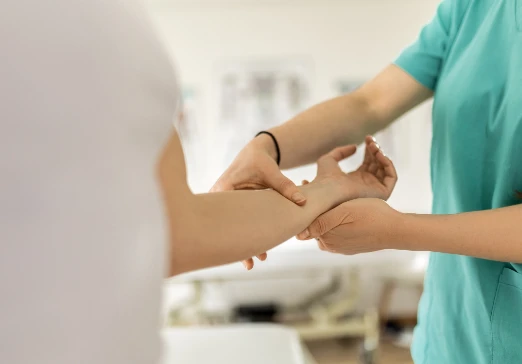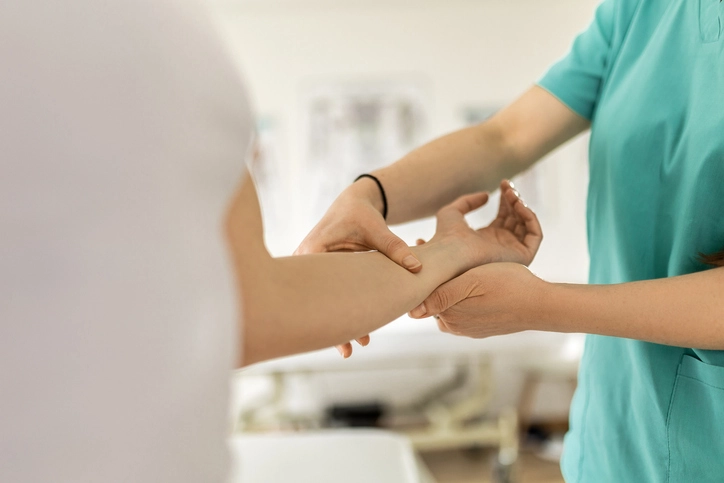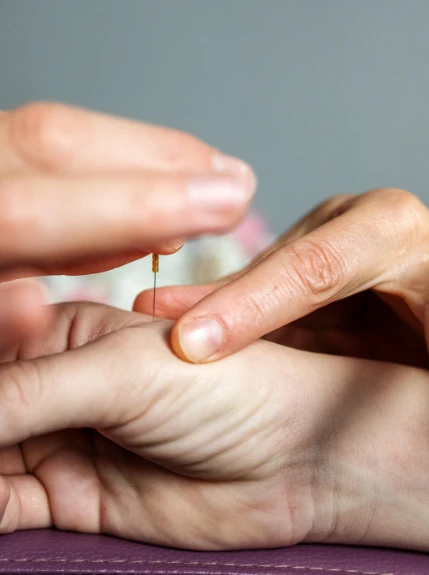Common symptoms of CTS
The main symptoms of carpal tunnel syndrome (CTS) arise from irritation to the median nerve which can occur in the thumb, index, middle or half of the ring finger:
- Tingling
- Becoming less sensitive to touch (hypoaesthesia)
- Numbness
- Weakness and wasting away (atrophy) of the muscles at the base of the thumb
- Pain
- Dry skin, swelling or changes in the skin colour of the hand
- A burning, prickling sensation (paraesthesia) in the hand similar to pins and needles
- A dull ache and discomfort in the hand, forearm or upper arm

Causes of CTS
The symptoms of carpal tunnel syndrome (CTS) are caused by compression of the median nerve at the wrist.
Any pressure on the median nerve can disrupt the nerve signals, affecting your sense of touch and hand movements. The median nerve can become compressed if the tissues inside the tunnel become swollen or the tunnel narrows over time.
In most cases, it is not known what causes the median nerve to become compressed, although a number of things increase the risk of developing CTS. These include:
- A family history of CTS
- Certain activities such as playing a musical instrument, manual labour or working with vibrating tools
- Pregnancy
- Certain health conditions, such as diabetes, an under-active thyroid gland, obesity or rheumatoid arthritis
- Injuries to the wrist such as fractures or sprains
Follow-up treatment appointments
Treatment for carpal tunnel syndrome (CTS) depends on the severity of the condition and how long you have had it. You should try to avoid any activities that make your symptoms worse. If your work involves using a computer keyboard, there is little evidence that modifications at your workplace are likely to be of any help in relieving your symptoms. If symptoms persist, there are a range of non-surgical and surgical treatments available that aim to relieve the pressure on the median nerve.


Treating carpal tunnel syndrome
Treatment for carpal tunnel syndrome (CTS) depends on the severity of the condition and how long you have had it. You should try to avoid any activities that may make your symptoms worse, as these can undo the benefits of CTS treatments. Unfortunately, there is little evidence that modifications to your workspace can help cases of CTS linked to keyboard usage. If symptoms persist, a range of non-surgical and surgical treatments are available that aim to relieve the pressure on the median nerve.
Osteopathic exam for CTS
- During the consultation the osteopath will try and discover the factors contributing to the problem. Posture at work or whilst feeding the baby may be putting pressure on the wrist, shoulders, ribs and neck all of which may reduce the body’s ability to drain the fluid back to the heart from the arm.
- Patient will be asked if they suffer from any endocrine conditions such as hypothyroidism have been known to cause carpal tunnel syndrome.
- The osteopath will examine the patient standing paying attention to spinal curves, neck and shoulder looking for areas of compression or tension.
- Active movements will include movements of the neck, shoulder, elbow and wrists- examining areas of tension and reduced movement.
- A full examination including neurological examination as well as checking pulses.
- The osteopath will examine the wrist, fingers, elbow, shoulder, collar bone, neck and ribs noting areas of tension and reduced movement.

Osteopathic and acupuncture treatment for CTS
- Effective CTS treatments will relieve restrictions of the soft tissues around the wrist, carpal bones, phalanges, and carpal tunnel.
- If needed, the osteopath will also use soft tissue manipulation and mobilisation of the arm, elbow, and forearm to relieve pressure on the median nerve.
- We will also advise on correct posture to reduce pressure on your wrist and reduce the chances of recurring CTS.
- Massage therapy can help encourage fluid drainage from the wrist joint, relieving pressure on the median nerve.
- Gentle osteopathic techniques used on the throat, neck, oesophagus, and hyoid bone can also help treat CTS and improve thyroid function.
- Osteopaths can also help relieve pressure on the median nerve by releasing soft tissue tension around the neck, ribs, and shoulders to relieve brachial tension around the neck and aid drainage into the thoracic duct.
- Acupuncture can help loosen forearm muscles that contribute to CTS.
- Lastly, we will recommend wrist and arm exercises to help with the pain, improve wrist movement, and loosen tight wrist muscles.
Osteopathic Treatments Are Covered By Private Health Insurance






